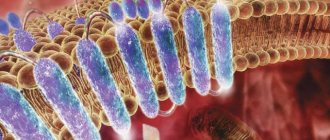In the first year after birth, the baby should eat properly and fully. To understand whether he is full, you should know the volume of the stomach of a newborn baby. Mothers will be less nervous and will not once again torment their baby about malnutrition. It is also important to remember that the baby will not eat more than normal, and if he is cheerful, sleeps well and eats regularly, then there is no reason to worry.
Stomach size in a newborn
The main digestive organ is formed in the baby even before birth. The size of a newborn's stomach at 1 day is similar to a cherry, by 3 days - like a walnut. In the first week it reaches the size of an apricot, and at 1 month it is already the size of an egg. Its functionality manifests itself with the beginning of the intake of food, which the baby receives by absorption. Due to the dense lining of the stomach, which does not yet stretch and retain food, regurgitation often occurs.
Therefore, for proper development, it is important to frequently put the baby to the breast, but not for long, so that the walls of the organ gradually stretch and become more elastic, and the amount of milk in the mother, which replaces colostrum, increases. In the table you can trace the increase in stomach capacity from the first days of the baby’s life:
| Child's age | Stomach volume, ml |
| 1 day | 5—7 |
| 3 days | 20—30 |
| 1 Week | 45—60 |
| up to 1 month | 80—150 |
Beneficial properties of colostrum and breast milk
Colostrum has a number of beneficial properties:
- the caloric content and nutritional value of colostrum is much higher than that of milk;
- colostrum does not put an unbearable burden on the newborn’s kidneys, since it contains a minimal amount of fluid;
- Colostrum contains much higher levels of vitamins and nutrients than breast milk;
- Colostrum has a laxative effect and helps quickly clear the baby’s intestines of meconium;
- prevents the development of physiological jaundice in newborns;
- has a beneficial effect on the baby’s immunity and produces the necessary antibodies to fight pathogenic bacteria and viruses;
- Colostrum contains a sufficient amount of proteins, fats and carbohydrates, which helps the child quickly satisfy hunger;
- colostrum contains a sufficient amount of immunoglobulin antibodies that protect the baby’s internal organs from harmful factors;
- a sufficient content of leukocytes in colostrum contributes to the destruction of pathogenic bacteria and viruses that managed to penetrate the newborn’s body;
The newborn's stomach has a low content of pepsin and hydrochloric acid, which affects the acidity of the baby's gastric juice. In breastfed children, the acidity of gastric juice is reduced, but this does not prevent the immunoglobulin antibodies contained in breast milk from performing their protective function.
Breastfeeding a newborn in the first days of life promotes proper digestive process, as the baby receives a small amount of food that is easily digested. Artificial feeding quickly increases the volume of a newborn's stomach
and can lead to improper metabolism in the child’s body. In the process of attaching the baby to the mother's breast, a close connection is established between them, which has a beneficial effect on the baby's health.
Due to certain circumstances, sometimes a mother has to express breast milk and give it separately or even supplement it with formula. What reasons might serve for making such a decision?
- the newborn has lost more than 10% of its original birth weight.
- the baby refuses or cannot take the breast.
- the number of wet diapers and dirty diapers indicates that the baby is starving.
- a newborn who develops physiological jaundice is advised to stay under a special lamp.
- The baby was born premature and requires intensive care.
- long and unhealthy sleep of the child (more than 2-3 hours).
If attempts to breastfeed a newborn are unsuccessful, it is worth expressing colostrum and trying different methods of supplementing with non-sucking objects: from a pipette, from a syringe, from a spoon.
After this, you can again try to give the baby the breast so that he can fully develop the sucking reflex and learn to grasp the breast correctly. If a mother is unable to express enough colostrum to feed her baby, supplementation with donor milk or formula may be necessary. INTERESTING! What is demand feeding?
Development up to a year, by month
The anatomical characteristics of the baby's stomach allow it to digest only liquid food.
The stomach capacity of a small child changes every day. This is a biological feature, which indicates the gradual development of the digestive system, adaptation to the external environment and growth of the baby. In the absence of pathologies, the size of the ventricle changes gradually over the months. In a one-month-old baby it will reach 100 ml, and at 3 months the volume is 150 ml. In a 6-month-old baby, the organ increases to 200 milliliters. The volume of a one-year-old child's stomach is 250 ml. Mom can use these indicators to determine the apparent amount of food for one meal.
To avoid problems with indigestion in a child, and not to cause inflammation, you need to use liquid food for feeding, which is quickly digested.
Older
Until the age of 1 year, a child’s digestive system develops rapidly. From the age of 2 years, the size of the stomach begins to gradually develop and is equal to 0.35-0.4 liters, including for solid food. In older children, 4-5 years old, it stretches to 400 ml and in 8-year-old children it reaches 0.5 liters. To prevent the organ from growing, because the gastrointestinal tract is still developing, it is recommended that the child be given soft and hard food that is cut into small pieces.
As a person gradually grows, his stomach also increases. In adults, it is 0.5 liters and can stretch to 2.5-4 liters to better digest food and drink. But if you eat large portions of food at one time, drink a lot of liquid and make frequent snacks, leading to overeating, this can lead to obesity. But it happens that the epigastrium stretches due to slow work. The size of the stomach does not depend on the fatness of a person.
Nutrition for children aged 1 to 1.5 years
The child’s body grows, its functions improve, the baby’s cognitive and motor activity increases, and the need for energy increases. All these reasons influence the child’s diet, which is already significantly different from the diet of children in the first year of life.
What happens to a child’s body from one to one and a half years old?
At this age, children continue to develop the chewing apparatus, a sufficient number of teeth appear - by the age of 1.5 years, children should already have 12 teeth. The activity of digestive juice and enzymes also increases, but their functions still do not reach full maturity. The volume of the stomach increases - from 200 to 300 ml. Gastric emptying occurs on average after 4 hours, which allows you to eat 4-5 times a day.
The daily amount of food (excluding liquids consumed) for children from one to one and a half years old is 1200-1250 ml. This volume (including calorie content) is distributed among feedings in approximately the following ratio: breakfast - 25%, lunch - 35%, afternoon snack - 15%, dinner - 25%. The volume of a single meal can be 250 ml, taking into account 5 feedings a day, and 300 ml with 4 feedings a day.
How to feed a child from one year old?
For children 1-1.5 years of age, dishes with a mushy consistency are preferable. If a child’s chewing teeth (baby molars) have erupted by this age, he can be offered whole pieces of food no larger than 2-3 cm in size. The child develops a sense of taste, an attitude towards food, the first preferences and habits begin to form. The baby begins to develop a conditioned food reflex during meals, which ensures sufficient, rhythmic secretion of digestive juices and good absorption of food. That is why it is important to follow a diet and expand the diet by introducing new products and dishes.
The child’s cognitive and motor activity increases, and along with it, the body’s energy consumption increases. The physiological need for energy in the age group from 1 year to 1.5 years is on average 102 kcal per 1 kg of body weight. With an average body weight of 11 kg, it is 1100 kcal per day.
The main requirements for a child’s diet after one year are variety and balance in basic nutrients (proteins, fats, carbohydrates, minerals, vitamins). Combinations of dishes from vegetables, cottage cheese, cheese, milk, animal and poultry meat, eggs, cereals and flour products are required.
The basis of the diet of a child from 1 to 1.5 years old is foods high in animal protein: milk, dairy and fermented milk products, meat, poultry, eggs. The child should receive dishes from these products, as well as from vegetables, fruits and cereals, daily.
Dairy products for children over one year old
In the nutrition of a baby over 1 year of age, milk, dairy and fermented milk products play a large role. They contain easily digestible proteins, fats, vitamins, and minerals. Fermented milk products contain lactic acid bacteria, which regulate the functioning of the gastrointestinal tract, have a positive effect on the intestinal microflora, improve digestion, and increase the child’s immunity. Milk, kefir, and yogurt should be included daily in the diet of a healthy child, and cream, cottage cheese, sour cream and cheese can be used after one or two days.
For children with normal body weight, foods with a reduced percentage of fat content are not acceptable; the diet uses milk with 3.2% fat content, kefir 2.5-3.2%, yoghurts 3.2%, sour cream up to 10%, cottage cheese like milk , and creamy - 10% fat. The total amount of milk and fermented milk products should be 550-600 ml per day, taking into account the preparation of various dishes. Of these, a child can receive 200 ml of kefir intended for baby food daily. For babies with intolerance to cow's milk proteins, it is best to postpone introduction to whole milk until a later date (up to 2-2.5 years), and instead continue to use formulas for the second half of life (they are made from whole milk powder without adding whey).
One-year-old babies can receive only specialized children's milk (not creamy) yogurt with a moderate content of fats and carbohydrates in a volume of up to 100 ml per day. Cottage cheese, as a source of protein and calcium, is required for children within 50 g per day. Sour cream or cream 5-10 g can be used to season first courses; hard cheeses up to 5 g in crushed form are used in the nutrition of a baby in the second year of life after 1-2 days.
Can children eat eggs?
Definitely yes, if there are no medical contraindications, such as food intolerance, dyskinesia (impaired contractions) of the biliary tract). Eggs are given to the baby hard-boiled or added to various dishes, in the daily amount of 1/2 chicken egg or 1 quail. Until one and a half years, it is recommended to use only hard-boiled yolk, mixing it with vegetable puree.
What kind of meat can a child eat?
With age, the amount of meat in the diet gradually increases. Canned meat, meat soufflé, meatballs, minced meat from lean varieties of beef, veal, pork, horse meat, rabbit, chicken, turkey in the amount of 100 g can be given to the child daily, preferably in the first half of the day, given their long period of absorption. The expansion of the diet occurs due to the introduction of offal - liver, tongue and children's sausages (the packaging indicates that they are intended for young children). Sausages are not included in the list of “allowed” products.
Fish day: what fish to choose for the children's menu?
With good tolerance and the absence of allergic reactions, low-fat sea and river fish (pollock, hake, cod, haddock) are introduced into the child’s diet in the form of fish, canned fish and vegetables for baby food, fish soufflés, 30-40 g per dose, 1-2 once a week.
You can't spoil porridge with oil
It is advisable to use vegetable oil in a daily requirement of 6 g in its raw form, adding it to vegetable purees and salads. The child receives fats of animal origin with sour cream and butter (daily allowance up to 17 g). By the way, in the diet of children over one year old it is still recommended to widely use gluten-free cereals (buckwheat, rice, corn), gradually introducing oatmeal. It is recommended to give porridge once a day in a volume of 150 ml. Until 1.5 years old, you should not offer your child pasta rich in carbohydrates.
The set of products for children 1-1.5 years old should include bread of various varieties made from rye flour (10 g/day) and coarse wheat flour (40 g/day). Cookies and biscuits can be given 1-2 pieces per meal.
We create a fruit and vegetable menu for children
Vegetables are important as a source of carbohydrates, vitamins, mineral salts, dietary fiber, and should be widely used in the nutrition of children from 1 to 1.5 years old in the form of vegetable purees. The daily volume of vegetable dishes from cabbage, zucchini, carrots, pumpkin with the addition of onions and herbs is 200 g. And potato dishes - no more than 150 g, because it is rich in starch, which slows down metabolism. Young children, as well as children with functional disorders of the gastrointestinal tract, should not be offered garlic, radishes, radishes and turnips.
In the absence of medical contraindications (for example, food allergies), children should receive 100-200 g per day of fresh fruits and 10-20 g of berries. They also benefit from various fruit, berry (preferably without sugar) and vegetable juices, rosehip decoction (up to 100-150 ml) per day after meals. It is not recommended to use jelly in the diet of young children, since they unnecessarily enrich the food with carbohydrates and their nutritional value is low.
Compote will not replace water
Do not forget that the child must receive a sufficient amount of fluid. There are no norms for the volume of additional liquid; the baby needs to be given water on demand (during feeding, in between feedings). It is best to offer your child boiled water, baby drinking water, weak teas or baby teas. Sweet drinks - compotes, fruit drinks, juices do not compensate for the lack of fluid, and the sugar they contain reduces appetite and increases the load on the child’s pancreas. Make sure that liquid is available to your baby between feedings.
Cooking food for children must be correct
And a few words about food processing: for a child under 1.5 years old. Porridges and soups are prepared in pureed form, vegetables and fruits in the form of puree, meat and fish in the form of soft minced meat (passed once through a meat grinder) or in the form of soufflés, steamed cutlets, and meatballs. All dishes are prepared by boiling, stewing, steaming, without adding spices (pepper, garlic, etc.). Feed your baby from a spoon and let him drink from a cup.
Approximate single amount of food (in grams) recommended for children aged 1 to 1.5 years
The daily volume of food is 1200-1250 ml. The calorie content of the daily diet is 1200 kcal.
Breakfast: Porridge or vegetable dish (150 g); meat or fish dish, or omelette (50 g); Milk (100 ml)
Lunch: Soup (50 g); meat or fish dish (50 g); side dish (70 g); fruit juice (100 ml)
Afternoon snack: Kefir or milk (150 ml); cookies (15 g); fruit (100 g)
Dinner: Vegetable dish or porridge, or cottage cheese casserole (150 g); milk or kefir (150 ml)
Sample menu for 1 day:
Breakfast: Milk porridge with fruit; Bread
Lunch: Vegetable puree soup; vegetable puree from cauliflower with meat; biscuits; Fruit juice.
Afternoon snack: Yogurt or biokefir; children's cookies.
Dinner: Cottage cheese or milk; fruit or vegetable puree.
At night: Kefir.
Whole milk is milk, during the processing of which none of its components – proteins, fats, carbohydrates, vitamins and mineral salts, etc. – has been changed qualitatively and/or quantitatively.
Gluten-free porridges - porridges that do not contain gluten - a vegetable protein of some cereals: rye, barley, oats, wheat (from which semolina is made), which can cause damage to the cells of the small intestine in young children - celiac disease and allergic reactions, since there is a deficiency in children peptidase enzyme that breaks down gluten.
In the first year after birth, the baby should eat properly and fully. To understand whether he is full, you should know the volume of the stomach of a newborn baby. Mothers will be less nervous and will not once again torment their baby about malnutrition. It is also important to remember that the baby will not eat more than normal, and if he is cheerful, sleeps well and eats regularly, then there is no reason to worry.











